|
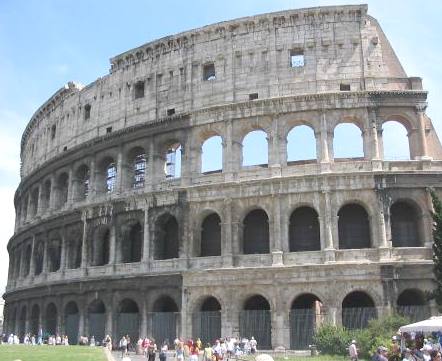
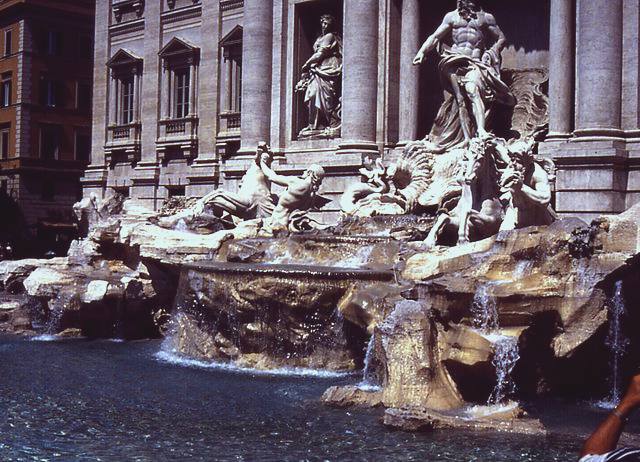
Roman
Colosseum and Trevi fountain sculpture
ANCIENT
ROME
In modern historiography, ancient Rome is the
Roman civilisation from the founding of the Italian city of Rome in the 8th century BC to the collapse of the Western Roman Empire in the 5th century AD. It encompasses the Roman Kingdom (753509 BC), the Roman Republic (50927 BC), and the Roman Empire (27 BC476 AD) until the fall of the western empire.
Ancient Rome began as an Italic settlement, traditionally dated to 753 BC, beside the River Tiber in the Italian Peninsula. The settlement grew into the city and polity of Rome, and came to control its neighbours through a combination of treaties and military strength. It eventually controlled the Italian Peninsula, assimilating the Greek culture of southern Italy (Magna Grecia) and the Etruscan culture, and then became the dominant power in the Mediterranean region and parts of Europe. At its height it controlled the North African coast, Egypt, Southern Europe, and most of Western Europe, the Balkans, Crimea, and much of the Middle East, including Anatolia, Levant, and parts of Mesopotamia and Arabia. That empire was among the largest empires in the ancient world, covering around 5 million square kilometres (1.9 million square miles) in AD 117, with an estimated 50 to 90 million inhabitants, roughly 20% of the world's population at the time. The Roman state evolved from an elective monarchy to a classical republic and then to an increasingly autocratic military dictatorship during the Empire.
Ancient Rome is often grouped into classical antiquity together with ancient Greece, and their similar cultures and societies are known as the Greco-Roman world. Ancient Roman civilisation has contributed to modern language, religion, society, technology, law, politics, government, warfare, art, literature, architecture, and engineering. Rome professionalised and expanded its military and created a system of government called res publica, the inspiration for modern republics such as the United States and France. It achieved impressive technological and architectural feats, such as the empire-wide construction of aqueducts and roads, as well as more grandiose monuments and facilities.
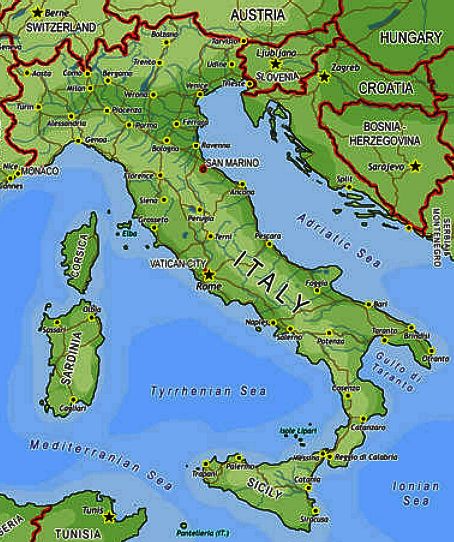
THE
COLOSSEUM
The Colosseum is an elliptical amphitheatre in the centre of the city of Rome, Italy, just east of the Roman Forum. It is the largest ancient amphitheatre ever built, and is still the largest standing amphitheatre in the world, despite its age. Construction began under the Emperor Vespasian (r. 6979 AD) in 72 and was completed in AD 80 under his successor and heir, Titus (r. 7981). Further modifications were made during the reign of Domitian (r. 8196). The three emperors who were patrons of the work are known as the Flavian dynasty, and the amphitheatre was named the Flavian Amphitheatre (Latin: Amphitheatrum Flavium; Italian: Anfiteatro Flavio [aɱfiteˈaːtro ˈflaːvjo]) by later classicists and archaeologists for its association with their family name (Flavius).
The Colosseum is built of travertine limestone, (volcanic rock), and brick-faced concrete. It could hold an estimated 50,000 to 80,000 spectators at various points in its history, having an average audience of some 65,000; it was used for gladiatorial contests and public spectacles including animal hunts, executions, re-enactments of famous battles, dramas based on Roman mythology, and briefly mock sea battles. The building ceased to be used for entertainment in the early medieval era. It was later reused for such purposes as housing, workshops, quarters for a religious order, a fortress, a quarry, and a Christian shrine.
Although substantially ruined by earthquakes and stone robbers taking spolia, the Colosseum is still a renowned symbol of Imperial Rome and was listed as one of the New 7 Wonders of the World. It is one of Rome's most popular tourist attractions and has links to the Catholic Church, as each Good Friday the Pope leads a torchlit "Way of the Cross" procession that starts in the area around the Colosseum. The Colosseum is depicted on the Italian version of the 5 euro cent coin.
The
Colosseum is a UNESCO
world
heritage site.
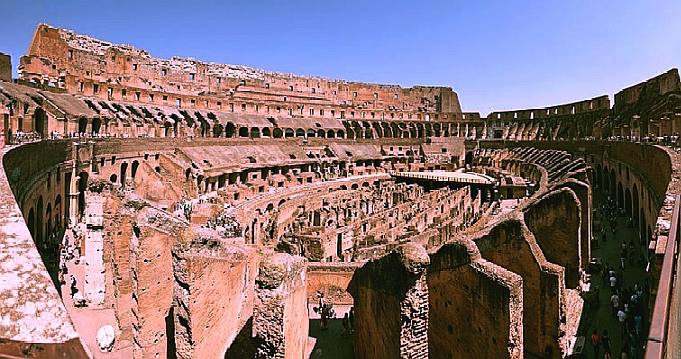
Photo by Paolo Costa
Baldi
CAESAR - FIRST TRIUMVIRATE
In the mid-1st century BC, Roman politics were restless. Political divisions in Rome split into one of two groups, populares (who hoped for the support of the people) and optimates (the "best", who wanted to maintain exclusive aristocratic control). Sulla overthrew all populist leaders and his constitutional reforms removed powers (such as those of the tribune of the plebs) that had supported populist approaches. Meanwhile, social and economic stresses continued to build; Rome had become a metropolis with a super-rich aristocracy, debt-ridden aspirants, and a large proletariat often of impoverished farmers. The latter groups supported the Catilinarian conspiracy
- a resounding failure since the consul Marcus Tullius Cicero quickly arrested and executed the main leaders.
Gaius Julius Caesar reconciled the two most powerful men in Rome: Marcus Licinius Crassus, who had financed much of his earlier career, and Crassus' rival, Gnaeus Pompeius Magnus (anglicised as Pompey), to whom he married his daughter. He formed them into a new informal alliance including himself, the First Triumvirate ("three men"). Caesar's daughter died in childbirth in 54 BC, and in 53 BC, Crassus invaded Parthia and was killed in the Battle of Carrhae; the Triumvirate disintegrated. Caesar conquered Gaul, obtained immense wealth, respect in Rome and the loyalty of battle-hardened legions. He became a threat to
Pompey and was loathed by many optimates. Confident that Caesar could be stopped by legal means, Pompey's party tried to strip Caesar of his legions, a prelude to Caesar's trial, impoverishment, and exile.
To avoid this fate, Caesar crossed the Rubicon River and invaded Rome in 49 BC. The Battle of Pharsalus was a brilliant victory for Caesar and in this and other campaigns, he destroyed all of the optimates leaders: Metellus Scipio, Cato the Younger, and Pompey's son, Gnaeus Pompeius. Pompey was murdered in Egypt in 48 BC. Caesar was now pre-eminent over Rome: in five years he held four consulships, two ordinary dictatorships, and two special dictatorships, one for perpetuity. He was murdered in 44 BC, on the Ides of March by the
Liberatores. Pope
Vatican
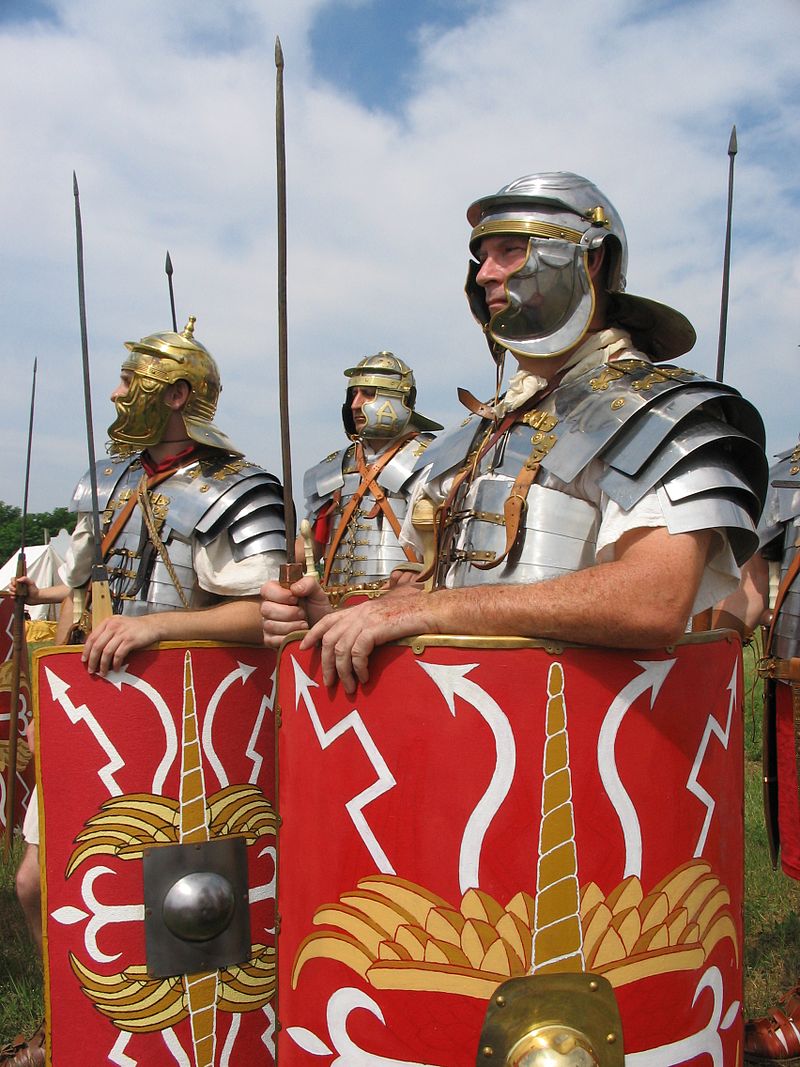
LEGIONNAIRES AND CENTURIONS
In the Roman army during classical antiquity, a centurion, was a commander, nominally of a century (Latin: centuria), a military unit originally consisting of 100 legionaries. The size of the century changed over time; from the 1st century
BC through most of the imperial era it was reduced to 80 men.
A centurion was promoted for being an exemplary soldier and was then expected to become a strict commander of his subordinates, to lead his troops by example, and coordinate his century's actions. They were also responsible for handling logistics and supplies, as well as any discipline that was required. In a Roman legion, centuries were grouped into cohorts and commanded by a senior centurion. The prestigious first cohort (a formation of five double-strength centuries of 160 men each) was led by the primus pilus, who commanded the primi ordines who were the centurions of the first cohort.
A centurion's symbol of office was the vine staff, with which they disciplined even Roman citizens, who were otherwise legally protected from corporal punishment by the Porcian
laws. Centurions also served in the Roman navy. They were professional officers, analogous to modern non-commissioned officers in terms of pay-grade, prestige, and responsibilities. In late antiquity and the Middle Ages, the Byzantine army's centurions were known by the name kentarch (Kentarches).
The Roman legionary was a citizen soldier of the Roman army. These soldiers would conquer and defend the territories of ancient Rome during the late Republic and Principate eras, alongside auxiliary and cavalry detachments. At its height, Roman legionaries were viewed as the foremost fighting force in the Roman world, with commentators such as Vegetius praising their fighting effectiveness centuries after the classical Roman legionary disappeared.
Roman legionaries were recruited from Roman citizens under age 45. They were first predominantly made up of recruits from Roman Italy, but more were recruited from the provinces as time went on. As legionaries moved into newly conquered provinces, they helped Romanize the native population and helped integrate the disparate regions of the Roman Empire into one polity. They enlisted in a legion for 25 years of service, a change from the early practice of enlisting only for a campaign. Legionaries were expected to fight, but they also built much of the infrastructure of the Roman Empire and served as a policing force in the provinces. They built large public works projects, such as walls, bridges, and roads. The legionary's last five years of service were on lighter duties. Once retired, a Roman legionary received a parcel of land or its equivalent in money and often became a politically prominent member of society.
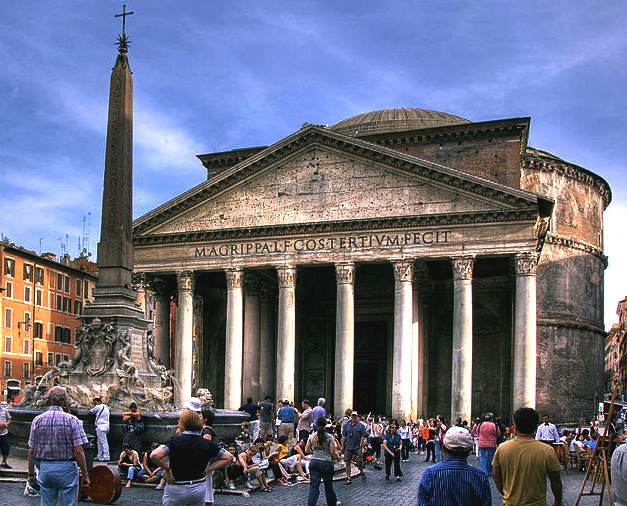
OCTAVIAN - SECOND TRIUMVIRATE
Caesar's assassination caused political and social turmoil in Rome; the city was ruled by his friend and colleague, Marcus Antonius. Soon afterward, Octavius, whom Caesar adopted through his will, arrived in Rome. Octavian (historians regard Octavius as Octavian due to the Roman naming conventions) tried to align himself with the Caesarian faction. In 43 BC, along with Antony and Marcus Aemilius Lepidus, Caesar's best friend, he legally established the Second Triumvirate. Upon its formation, 130300 senators were executed, and their property was confiscated, due to their supposed support for the Liberatores.
In 42 BC, the Senate deified Caesar as Divus Iulius; Octavian thus became Divi filius, the son of the deified. In the same year, Octavian and Antony defeated both Caesar's assassins and the leaders of the Liberatores, Marcus Junius Brutus and Gaius Cassius Longinus, in the Battle of Philippi. The Second Triumvirate was marked by the proscriptions of many senators and equites: after a revolt led by Antony's brother Lucius Antonius, more than 300 senators and equites involved were executed, although Lucius was spared.
The Triumvirate divided the Empire among the triumvirs: Lepidus was given charge of
Africa, Antony, the eastern provinces, and Octavian remained in Italia and controlled Hispania and Gaul. The Second Triumvirate expired in 38 BC but was renewed for five more years. However, the relationship between Octavian and Antony had deteriorated, and Lepidus was forced to retire in 36 BC after betraying Octavian in Sicily. By the end of the Triumvirate, Antony was living in Ptolemaic
Egypt, ruled by his lover,
Cleopatra
VII. Antony's affair with Cleopatra was seen as an act of treason, since she was queen of another country. Additionally, Antony adopted a lifestyle considered too extravagant and Hellenistic for a Roman statesman. Following Antony's Donations of Alexandria, which gave to
Cleopatra the title of "Queen of Kings", and to Antony's and Cleopatra's children the regal titles to the newly conquered Eastern territories, war between Octavian and Antony broke out. Octavian annihilated Egyptian forces in the
Battle of Actium in 31
BC. Antony and Cleopatra committed
suicide. Now Egypt was conquered by the Roman Empire.
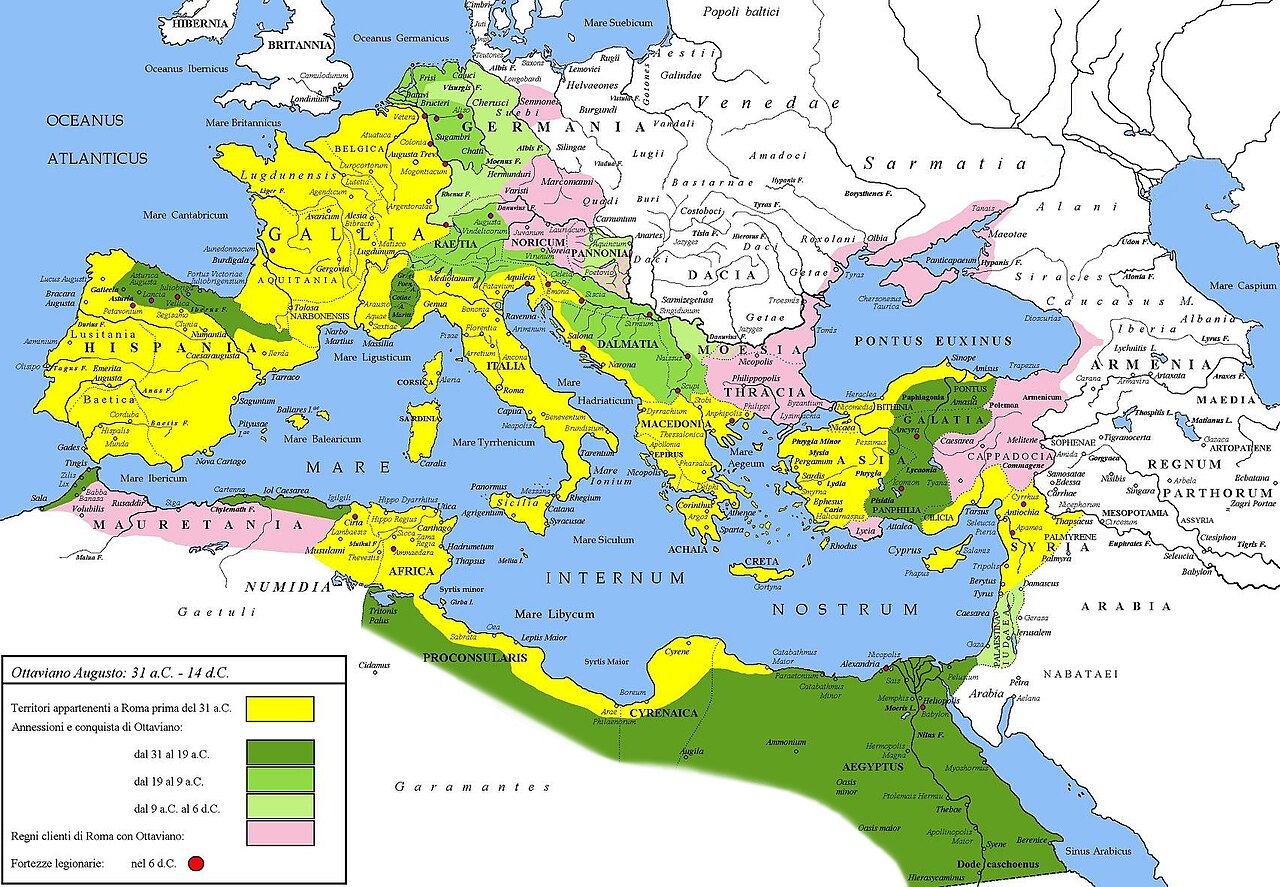
THE ROMAN EMPIRE
The Roman Empire ruled the Mediterranean and much of
Europe, Western Asia and North Africa. The Romans conquered most of this during the Republic, and it was ruled by emperors following Octavian's assumption of effective sole rule in 27 BC. The western empire collapsed in 476 AD, but the eastern empire lasted until the fall of Constantinople in 1453.
By 100 BC, Rome had expanded its rule to most of the Mediterranean and beyond. However, it was severely destabilized by civil wars and political conflicts, which culminated in the victory of Octavian over
Mark Antony and
Cleopatra at the
Battle of Actium in 31 BC, and the subsequent conquest of the
Ptolemaic Kingdom in Egypt. In 27 BC, the Roman Senate granted Octavian overarching military power (imperium) and the new title of
Augustus, marking his accession as the first Roman emperor. The vast Roman territories were organized into senatorial provinces, governed by proconsuls who were appointed by lot annually, and imperial provinces, which belonged to the emperor but were governed by legates.
The first two centuries of the Empire saw a period of unprecedented stability and prosperity known as the Pax Romana (lit. 'Roman Peace'). Rome reached its greatest territorial extent under Trajan (r. 98117 AD), but a period of increasing trouble and decline began under Commodus (r. 180192). In the 3rd century, the Empire underwent a 50-year crisis that threatened its existence due to civil war, plagues and barbarian invasions. The Gallic and Palmyrene empires broke away from the state and a series of short-lived emperors led the Empire, which was later reunified under Aurelian (r. 270275). The civil wars ended with the victory of Diocletian (r. 284305), who set up two different imperial courts in the Greek East and Latin West. Constantine the Great (r. 306337), the first Christian emperor, moved the imperial seat from Rome to Byzantium in 330, and renamed it Constantinople. The Migration Period, involving large invasions by Germanic peoples and by the Huns of Attila, led to the decline of the Western Roman Empire. With the fall of Ravenna to the Germanic Herulians and the deposition of Romulus Augustus in 476 by Odoacer, the Western Empire finally collapsed. The Eastern Roman Empire survived for another millennium with Constantinople as its sole capital, until the city's fall in 1453.
Due to the Empire's extent and endurance, its institutions and culture had a lasting influence on the development of language, religion, art, architecture, literature, philosophy, law, and forms of government across its territories. Latin evolved into the Romance languages while Medieval Greek became the language of the East. The Empire's adoption of Christianity resulted in the formation of medieval Christendom. Roman and Greek art had a profound impact on the Italian Renaissance. Rome's architectural tradition served as the basis for Romanesque, Renaissance and Neoclassical architecture, influencing Islamic architecture. The rediscovery of classical science and technology (which formed the basis for Islamic science) in medieval Europe contributed to the Scientific Renaissance and Scientific Revolution. Many modern legal systems, such as the Napoleonic Code, descend from Roman law. Rome's republican institutions have influenced the Italian city-state republics of the medieval period, the early United States, and modern democratic republics.
JULIO-CLAUDIAN DYNASTY
The Julio-Claudian dynasty was established by Augustus. The emperors of this dynasty were Augustus, Tiberius,
Caligula, Claudius and Nero. The Julio-Claudians started the destruction of republican values, but on the other hand, they boosted Rome's status as the central power in the Mediterranean region. While
Caligula and Nero are usually remembered in popular culture as dysfunctional emperors, Augustus and
Claudius are remembered as successful in politics and the military. This dynasty instituted imperial tradition in Rome and frustrated any attempt to reestablish a Republic.
Augustus (r. 27 BC AD 14) gathered almost all the republican powers under his official title, princeps, and diminished the political influence of the senatorial class by boosting the equestrian class. The senators lost their right to rule certain provinces, like Egypt, since the governor of that province was directly nominated by the emperor. The creation of the Praetorian Guard and his reforms in the military, creating a standing army with a fixed size of 28 legions, ensured his total control over the army.
Compared with the Second Triumvirate's epoch, Augustus' reign as princeps was very peaceful, which led the people and the nobles of Rome to support Augustus, increasing his strength in political affairs. His generals were responsible for the field command, gaining such commanders as
Marcus Vipsanius
Agrippa, Nero Claudius Drusus and Germanicus much respect from the populace and the legions. Augustus intended to extend the Roman Empire to the whole known world, and in his reign, Rome conquered Cantabria, Aquitania, Raetia, Dalmatia, Illyricum and Pannonia. Under Augustus' reign, Roman literature grew steadily in what is known as the Golden Age of Latin Literature. Poets like Virgil, Horace, Ovid and Rufus developed a rich literature, and were close friends of Augustus. Along with Maecenas, he sponsored patriotic poems, such as Virgil's epic Aeneid and historiographical works like those of Livy. Augustus continued the changes to the calendar promoted by Caesar, and the month of August is named after him. Augustus brought a peaceful and thriving era to Rome, known as Pax Augusta or Pax Romana. Augustus died in 14 AD, but the empire's glory continued after his era.
The Julio-Claudians continued to rule Rome after Augustus' death and remained in power until the death of Nero in 68 AD. Influenced by his wife, Livia Drusilla, Augustus appointed her son from another marriage, Tiberius, as his heir. The Senate agreed with the succession, and granted to Tiberius the same titles and honours once granted to Augustus: the title of princeps and Pater patriae, and the Civic Crown. However, Tiberius was not an enthusiast for political affairs: after agreement with the Senate, he retired to Capri in 26 AD, and left control of the city of Rome in the hands of the praetorian prefect Sejanus (until 31 AD) and Macro (from 31 to 37 AD).
Tiberius died (or was killed) in 37 AD. The male line of the Julio-Claudians was limited to Tiberius' nephew Claudius, his grandson Tiberius Gemellus and his grand-nephew Caligula. As Gemellus was still a child, Caligula was chosen to rule the empire. He was a popular leader in the first half of his reign, but became a crude and insane tyrant in his years controlling government. The Praetorian Guard murdered Caligula four years after the death of Tiberius, and, with belated support from the senators, proclaimed his uncle Claudius as the new emperor.
Claudius was not as authoritarian as Tiberius and Caligula. Claudius conquered Lycia and Thrace; his most important deed was the beginning of the conquest of Britannia. Claudius was poisoned by his wife, Agrippina the Younger in 54 AD. His heir was Nero, son of Agrippina and her former husband, since Claudius' son Britannicus had not reached manhood upon his father's death.
Nero sent his general, Suetonius Paulinus, to invade modern-day Wales, where he encountered stiff resistance. The Celts there were independent, tough, resistant to tax collectors, and fought Paulinus as he battled his way across from east to west. It took him a long time to reach the north west coast, and in 60 AD he finally crossed the Menai Strait to the sacred island of Mona (Anglesey), the last stronghold of the druids. His soldiers attacked the island and massacred the druids: men, women and children, destroyed the shrine and the sacred groves and threw many of the sacred standing stones into the sea. While Paulinus and his troops were massacring druids in Mona, the tribes of modern-day East Anglia staged a revolt led by queen Boadicea of the Iceni. The rebels sacked and burned Camulodunum, Londinium and Verulamium (modern-day Colchester, London and St Albans respectively) before they were crushed by Paulinus. Boadicea, like Cleopatra before her, committed
suicide to avoid the disgrace of being paraded in triumph in Rome. Nero is widely known as the first persecutor of
Christians and for the Great Fire of Rome, rumoured to have been started by the emperor himself. A conspiracy against Nero in 65 AD under Calpurnius Piso failed, but in 68 AD the armies under Julius Vindex in Gaul and Servius Sulpicius Galba in modern-day Spain revolted. Deserted by the Praetorian Guards and condemned to death by the senate, Nero killed himself.
As Roman provinces were being established throughout the
Mediterranean, Italy maintained a special status which made it domina provinciarum ("ruler of the provinces"), and especially in relation to the first centuries of imperial stability rectrix mundi ("governor of the world") and omnium terrarum parens ("parent of all lands").
FLAVIAN DYNASTY
The Flavians were the second dynasty to rule Rome. By 68 AD, the year of
Nero's death, there was no chance of a return to the Roman Republic, and so a new emperor had to arise. After the turmoil in the Year of the Four Emperors, Titus Flavius Vespasianus (anglicised as Vespasian) took control of the empire and established a new dynasty. Under the Flavians, Rome continued its expansion, and the state remained secure. Under Trajan, the Roman Empire reached the peak of its territorial expansion. Rome's dominion now spanned 5.0 million square kilometres (1.9 million square miles).
The most significant military campaign undertaken during the Flavian period was the siege and destruction of Jerusalem in 70 AD by Titus. The destruction of the city was the culmination of the Roman campaign in Judea following the Jewish uprising of 66 AD. The Second Temple was completely demolished, after which Titus' soldiers proclaimed him imperator in honour of the victory. Jerusalem was sacked and much of the population killed or dispersed. Josephus claims that 1,100,000 people were killed during the siege, of whom a majority were Jewish. 97,000 were captured and enslaved, including Simon bar Giora and John of Giscala. Many fled to areas around the Mediterranean.
Vespasian was a general under Claudius and
Nero and fought as a commander in the First Jewish-Roman War. Following the turmoil of the Year of the Four Emperors, in 69 AD, four emperors were enthroned in turn: Galba, Otho, Vitellius, and, lastly, Vespasian, who crushed Vitellius' forces and became emperor. He reconstructed many buildings which were uncompleted, like a statue of Apollo and the temple of Divus Claudius ("the deified Claudius"), both initiated by Nero. Buildings destroyed by the Great Fire of Rome were rebuilt, and he revitalised the Capitol. Vespasian started the construction of the Flavian Amphitheater, commonly known as the Colosseum. The historians Josephus and Pliny the Elder wrote their works during Vespasian's reign. Vespasian was Josephus' sponsor and Pliny dedicated his Naturalis Historia to Titus, son of Vespasian. Vespasian sent legions to defend the eastern frontier in Cappadocia, extended the occupation in Britannia (modern-day England, Wales and southern Scotland) and reformed the tax system. He died in 79 AD.
Titus became emperor in 79. He finished the Flavian Amphitheater, using war spoils from the First Jewish-Roman War, and hosted victory games that lasted for a hundred days. These games included gladiatorial combats, horse races and a sensational mock naval battle on the flooded grounds of the Colosseum. Titus died of fever in 81 AD, and was succeeded by his brother Domitian. As emperor, Domitian showed the characteristics of a tyrant. He ruled for fifteen years, during which time he acquired a reputation for self-promotion as a living god. He constructed at least two temples in honour of Jupiter, the supreme deity in Roman religion. He was murdered following a plot within his own household.
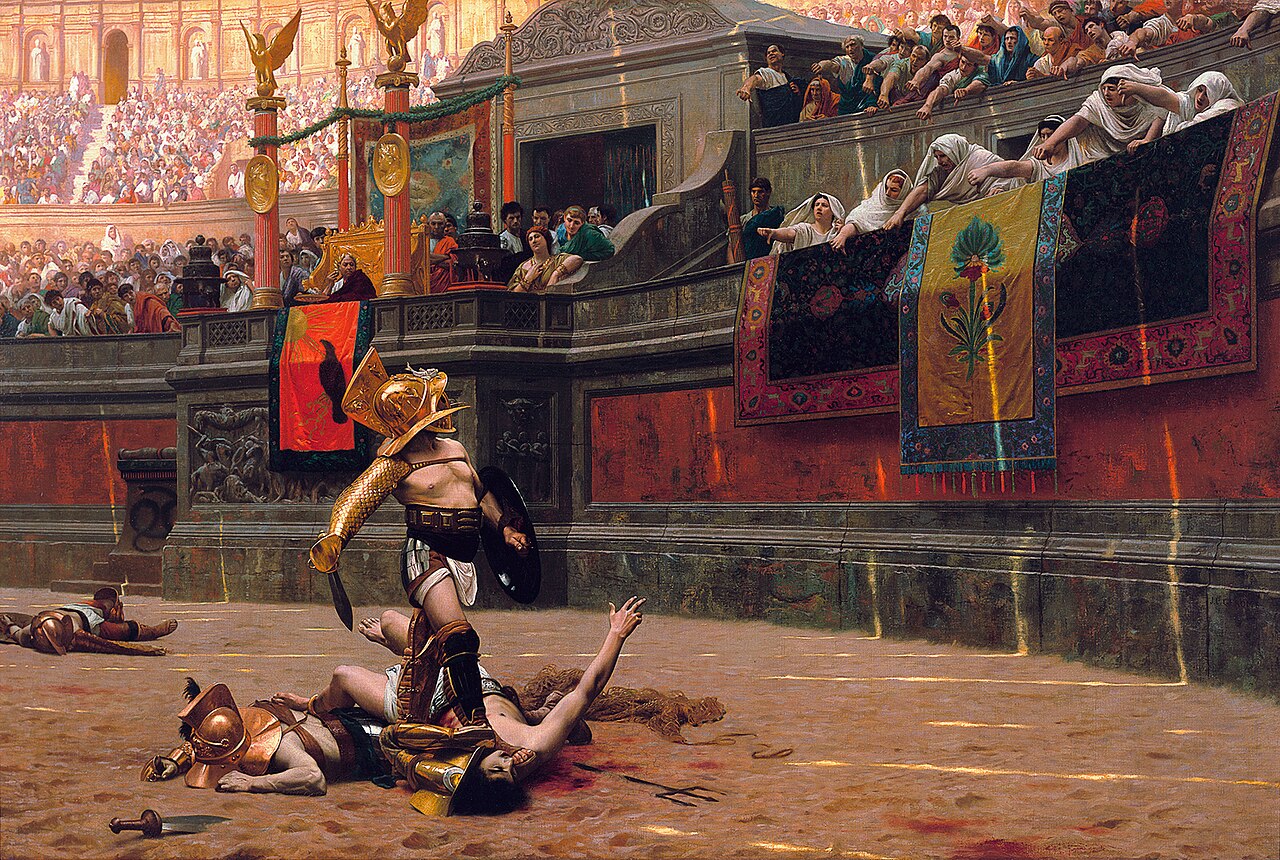
GLADIATORS
A gladiator ("swordsman", from gladius, "sword") was an armed combatant who entertained audiences in the Roman Republic and Roman Empire in violent confrontations with other gladiators, wild animals, and condemned criminals. Some gladiators were volunteers who risked their lives and their legal and social standing by appearing in the arena. Most were despised as slaves, schooled under harsh conditions, socially marginalized, and segregated even in death.
Irrespective of their origin, gladiators offered spectators an example of Rome's martial ethics and, in fighting or dying well, they could inspire admiration and popular acclaim. They were celebrated in high and low art, and their value as entertainers was commemorated in precious and commonplace objects throughout the Roman world.
The origin of gladiatorial combat is open to debate. There is evidence of it in funeral rites during the Punic Wars of the 3rd century BC, and thereafter it rapidly became an essential feature of politics and social life in the Roman world. Its popularity led to its use in ever more lavish and costly games.
The gladiator games lasted for nearly a thousand years, reaching their peak between the 1st century BC and the 2nd century AD. Christians disapproved of the games because they involved idolatrous pagan rituals, and the popularity of gladiatorial contests declined in the fifth century, leading to their disappearance.
In 216 BC, Marcus Aemilius Lepidus, late consul and augur, was honoured by his sons with three days of munera gladiatoria in the Forum Romanum, using twenty-two pairs of gladiators. Ten years later, Scipio Africanus gave a commemorative munus in Iberia for his father and uncle, casualties in the Punic Wars. High status non-Romans, and possibly Romans too, volunteered as his gladiators. The context of the Punic Wars and Rome's near-disastrous defeat at the Battle of Cannae (216 BC) link these early games to munificence, the celebration of military victory and the religious expiation of military disaster; these munera appear to serve a morale-raising agenda in an era of military threat and expansion. The next recorded munus, held for the funeral of Publius Licinius in 183 BC, was more extravagant. It involved three days of funeral games, 120 gladiators, and public distribution of meat (visceratio data)
a practice that reflected the gladiatorial fights at Campanian banquets described by Livy and later deplored by Silius Italicus.
The enthusiastic adoption of munera gladiatoria by Rome's Iberian allies shows how easily, and how early, the culture of the gladiator munus permeated places far from Rome itself. By 174 BC, "small" Roman munera (private or public), provided by an editor of relatively low importance, may have been so commonplace and unremarkable they were not considered worth recording:
Many gladiatorial games were given in that year, some unimportant, one noteworthy beyond the restthat of Titus Flamininus which he gave to commemorate the death of his father, which lasted four days, and was accompanied by a public distribution of meats, a banquet, and scenic performances. The climax of the show which was big for the time was that in three days seventy four gladiators fought.
In 105 BC, the ruling consuls offered Rome its first taste of state-sponsored "barbarian combat" demonstrated by gladiators from Capua, as part of a training program for the military. It proved immensely popular. Thereafter, the gladiator contests formerly restricted to private munera were often included in the state games (ludi) that accompanied the major religious festivals. Where traditional ludi had been dedicated to a deity, such as Jupiter, the munera could be dedicated to an aristocratic sponsor's divine or heroic ancestor.
Gladiatorial games offered their sponsors extravagantly expensive but effective opportunities for self-promotion, and gave their clients and potential voters exciting entertainment at little or no cost to themselves. Gladiators became big business for trainers and owners, for politicians on the make and those who had reached the top and wished to stay there. A politically ambitious privatus (private citizen) might postpone his deceased father's munus to the election season, when a generous show might drum up votes; those in power and those seeking it needed the support of the plebeians and their tribunes, whose votes might be won with the mere promise of an exceptionally good show. Sulla, during his term as praetor, showed his usual acumen in breaking his own sumptuary laws to give the most lavish munus yet seen in Rome, for the funeral of his wife, Metella.
In the closing years of the politically and socially unstable Late Republic, any aristocratic owner of gladiators had political muscle at his disposal. In 65 BC, newly elected curule aedile Julius Caesar held games that he justified as munus to his father, who had been dead for 20 years. Despite an already enormous personal debt, he used 320 gladiator pairs in silvered armour. He had more available in Capua but the senate, mindful of the recent Spartacus revolt and fearful of Caesar's burgeoning private armies and rising popularity, imposed a limit of 320 pairs as the maximum number of gladiators any citizen could keep in Rome. Caesar's showmanship was unprecedented in scale and expense; he had staged a munus as memorial rather than funeral rite, eroding any practical or meaningful distinction between munus and ludi.
Gladiatorial games, usually linked with beast shows, spread throughout the republic and beyond. Anti-corruption laws of 65 and 63 BC attempted but failed to curb the political usefulness of the games to their sponsors. Following Caesar's assassination and the Roman Civil War, Augustus assumed imperial authority over the games, including munera, and formalised their provision as a civic and religious duty. His revision of sumptuary law capped private and public expenditure on munera, claiming to save the Roman elite from the bankruptcies they would otherwise suffer, and restricting gladiator munera to the festivals of Saturnalia and Quinquatria. Henceforth, an imperial praetor's official munus was allowed a maximum of 120 gladiators at a ceiling cost of 25,000 denarii; an imperial ludi might cost no less than 180,000 denarii. Throughout the empire, the greatest and most celebrated games would now be identified with the state-sponsored imperial cult, which furthered public recognition, respect and approval for the emperor's divine numen, his laws, and his agents. Between 108 and 109 AD, Trajan celebrated his Dacian victories using a reported 10,000 gladiators and 11,000 animals over 123 days. The cost of gladiators and munera continued to spiral out of control. Legislation of 177 AD by Marcus Aurelius did little to stop it, and was completely ignored by his son, Commodus.
The trade in gladiators was empire-wide, and subjected to official supervision. Rome's military success produced a supply of soldier-prisoners who were redistributed for use in State mines or amphitheatres and for sale on the open market. For example, in the aftermath of the Jewish Revolt, the gladiator schools received an influx of
Jews - those rejected for training would have been sent straight to the arenas as noxii (lit. "hurtful ones"). The
best - the most robust - were sent to Rome. In Rome's military ethos, enemy soldiers who had surrendered or allowed their own capture and enslavement had been granted an unmerited gift of life. Their training as gladiators would give them opportunity to redeem their honour in the munus.
Two other sources of gladiators, found increasingly during the Principate and the relatively low military activity of the Pax Romana, were slaves condemned to the arena (damnati), to gladiator schools or games (ad ludum gladiatorium) as punishment for crimes, and the paid volunteers (auctorati) who by the late Republic may have comprised approximately
half - and possibly the most capable half - of all gladiators. The use of volunteers had a precedent in the Iberian munus of Scipio Africanus; but none of those had been paid.
For the poor, and for non-citizens, enrollment in a gladiator school offered a trade, regular food, housing of sorts and a fighting chance of fame and fortune. Mark Antony chose a troupe of gladiators to be his personal bodyguard. Gladiators customarily kept their prize money and any gifts they received, and these could be substantial. Tiberius offered several retired gladiators 100,000 sesterces each to return to the arena. Nero gave the gladiator Spiculus property and residence "equal to those of men who had celebrated
triumphs."
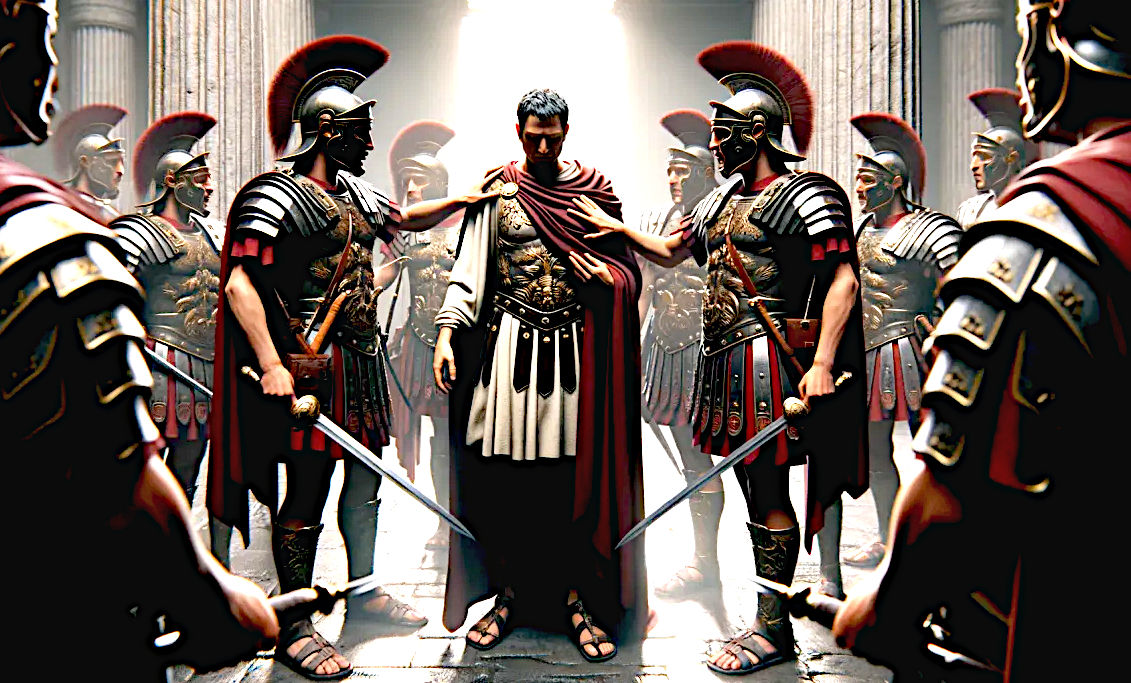
PRAETORIAN
GUARD
The Praetorian Guard (Latin: cohortes praetoriae) was the imperial guard of the Imperial Roman army that served as personal close bodyguard, counterintelligence to prevent sabotage of the imperial palace and assassination, crowd control, gathering military intelligence, maneuver warfare, and perform dangerous missions for the Roman emperors.
During the Roman Republic, the Praetorian Guards were escorts for high-ranking political officials (senators and procurators) and were bodyguards for the senior officers of the Roman legions. In 27 BC, after Rome's transition from republic to empire, the first emperor of Rome, Augustus, designated the Praetorians as his personal security escort. For three centuries, the guards of the Roman emperor were also known for their palace intrigues, by whose influence upon imperial politics the Praetorians could overthrow an emperor and then proclaim his successor as the new caesar of Rome. In AD 312, Constantine the Great disbanded the cohortes praetoriae and destroyed their barracks at the Castra Praetoria.
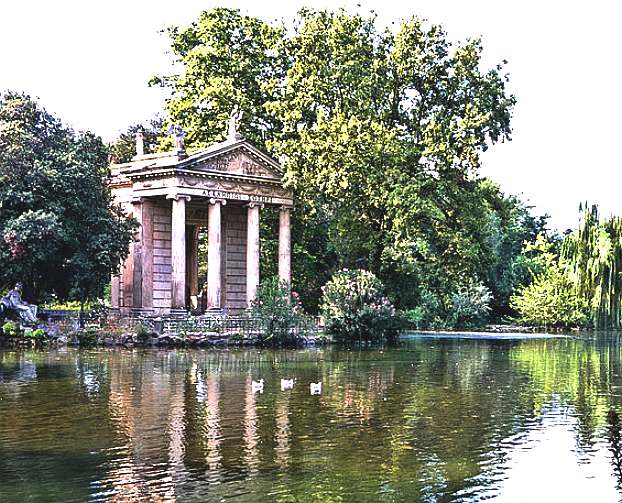
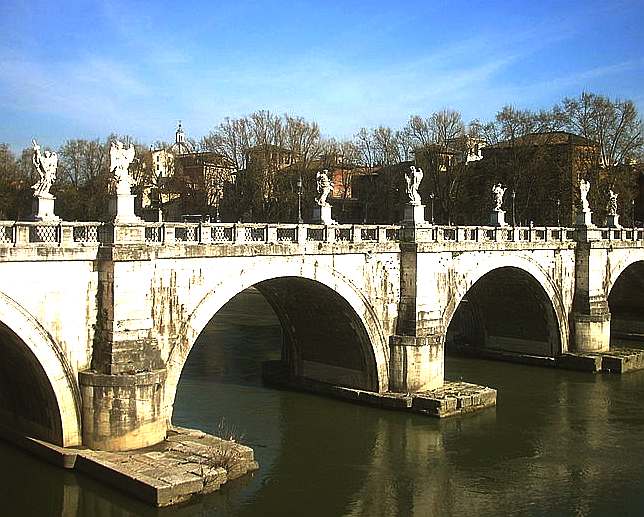
IN THE ROMAN REPUBLIC
In the period of the Roman Republic (50927 BC) the Praetorian Guard originated as bodyguards for Roman generals. The first historical record of the praetorians is as bodyguards for the Scipio family, ca. 275 BC. Generals with imperium (command authority of an army) also held public office, either as a magistrate or as a promagistrate; each was provided with lictors to protect the person of the office-holder. In practice, the offices of Roman consul and of proconsul each had twelve lictors, whilst the offices of praetor and of propraetor each had six lictors. In the absence of an assigned, permanent personal bodyguard, senior field officers safeguarded themselves with temporary bodyguard units of selected soldiers. In Hispania Citerior, during the Siege of Numantia (134133 BC), General Scipio Aemilianus safeguarded himself with a troop of 500 soldiers against the sorties of siege warfare aimed at killing Roman field commanders.
At the end of 40 BC, two of the three co-rulers who were the Second Triumvirate, Octavian and Mark Antony, had Praetorian Guards. Octavian installed his praetorians within the pomerium, the religious and legal boundary of Rome; this was the first occasion when troops were permanently garrisoned in Rome proper. In the Orient, Antony commanded three cohorts; in 32 BC, Antony issued coins honouring his Praetorian Guard. According to the historian Orosius, Octavian commanded five cohorts at the Battle of Actium in 31 BC; in the aftermath of Roman civil war, the victorious Octavian then merged his forces with the forces of Antony as symbolic of their political reunification. Later, as Augustus, the first Roman emperor (27 BCAD 14), Octavian retained the Praetorians as his imperial bodyguard. In the longer campaigns of the Roman army of the late Republic, the personal bodyguard unit was the norm for a commander in the field. At camp, the cohors praetoria, a cohort of praetorians guarding the commander, was posted near the praetorium, the tent of the commander.
Under the empire
The legionaries known as the Praetorian Guard were first hand-picked veterans of the Roman army who served as bodyguards to the emperor. First established by Augustus, members of the Guard accompanied him on active campaign, protecting the civic administrations and rule of law imposed by the Senate and the emperor. The Praetorian Guard was ultimately dissolved by Emperor Constantine I in the early 4th century. They were distinct from the Imperial German Bodyguard which provided close personal protection for the early Roman emperors. They benefited from several advantages via their close proximity with the emperor: the Praetorians were the only ones admitted while bearing arms in the center of sacred Rome, the Pomerium.
Their mandatory service was shorter in duration, for instance: 12 years with the Praetorians instead of 16 years in the legions starting year 13 BC, then carried to, respectively, 16 to 20 years in year 5 BC according to Tacitus. Their pay was higher than that of a legionary. Under Nero, the pay of a Praetorian was three and a half times that of a legionary, augmented by prime additions of donativum, granted by each new emperor. This additional pay was the equivalent of several years of pay and was often repeated at important events of the empire or events that touched the imperial family: birthdays, births and marriages. Major monetary distributions or food subsidies renewed and compensated the fidelity of the Praetorians following each failed particular attempted plot (such as that of Messalina against Claudius in AD 48 or Piso against Nero in AD 65). The Praetorians received substantially higher pay than other Roman soldiers in any of the legions, on a system known as sesquiplex stipendum, or by pay-and-a-half. So if the legionaries received 250 denarii, the guards received 375 per annum. Domitian and Septimius Severus increased the stipendum (payment) to 1,500 denarii per year, distributed in January, May and September.
Feared and dreaded by the population and by the Roman Senate, the Praetorians received no sympathy from the Roman people. A famous poem by Juvenal recalls the nail left in his foot by the sandal of a Praetorian rushing by him. "Praetorian" has a pejorative sense in French, recalling the often troubling role of the Praetorian of antiquity.
|
Adelaide
Aden
- Yemen
Afghanistan
Africa
- Central
- East
Alaska
Algeria
Amsterdam
Antarctic
- Antarctica
Arctic
- North
Pole
Argentina
Asia
Athens
Australia
Austria
Aztecs
- Mexico
Bahamas
Bangladesh
Baghdad
Bahrain
Barbados
Beachy
Head, England
Belgium
Berlin
Bermuda
Black
Rock Desert, Nevada
Bohemia
Bolivia
Bonneville,
Utah - History
Brazil
Brighton
- West Pier
British
Columbia
Bulgaria
Burma
Canada
Canary
Islands
Cape
Hope
Cape
York - Au
Caribbean
- Central America
Cayman
Islands
Chichester
Harbour
Chile
China
- Beijing
Columbia
- S. America
Columbo
- Sri Lanka
Cowes,
Isle of Wight
Croatia
Cuba
Cyprus
Czechoslovakia
Darwin
- Australia
Daytona
Beach
- Florida USA
Denmark
Dubai
Eastbounre
Pier, England
Earthquakes
East
Africa
Egypt
Equador
Equator
Europe
Falkland
Islands
Falmouth,
Cornwall
Fiji
Finland
Florida
France
Galapagos
Islands
Geography
Links
Geography
Records
Geography
Resources
|
Geography
Statistics
Germany
Gibraltar
- Links
Greece
Greenland
Hampshire
Hawaii
Holland
- Volendam
Hollywood,
California, LA
Hong
Kong
Hungary
Hurricanes
Iceland
India
- Mumbai
Indonesia
Links
Iran
Iraq
Ireland
Isle
of Man
Isle
of Wight - The
Needles
Israel
Italy
Jakarta
- Java
Jamaica
Japan
Jordan
Kent,
England - Sandgate
Kenya
Korea
Republic
of (South)
Kuwait
Kyoto
- Japan
Las
Vegas -
Lebanon
Libya
Life
on Earth
London
- Big
Ben
London
Eye - Madame
Tussauds
London
Houses
Parliament
London
- Buckingham
Palace
London
- Old
Bailey
London
- Overview
London
- The City
London
- Tower Bridge
London
- Trafalgar
Square
Luxembourg
Malaysia
Malta
Maya
Empire -
Central America
Melbourne,
Australia
Mexico
Middle
East
Monaco
Morocco
Mountains
Naples-
Italy
National
Geographic
Nepal
Nertherlands
- Eindhoven
New
York
New
Zealand
Nigeria
North
Africa
Norway
Nova
Scotia
Oceans
and Seas
Oman
Pakistan
Palermo
- Sicily
Palestine
Palma
- Malorca
|
Panama
Canal - Links
Paris
Pendine
Sands - Carmarthen
Peru
Philippines
Pisa
Planet
Earth
Poland
Port
Moresby - PNG
Port
Said - Egypt
Portugal
Puerto
Rico
Qatar
Quebec
Rio
de Janeiro
Romania
Rome
Russia
Salt
Lake City - Utah
Saudi
Arabia
Scotland
Senegal
West Africa
Singapore
Somalia
South
Africa
South
America
Southampton
Spain
- Espana
Sri
Lanka - Links
Stonehenge
Suez
Canal
Sudan
Surrey,
England Index
Sussex,
England Index
Sweden
Switzerland
Sydney,
Australia
Syria
Tahiti
- Polynesia
- Links
Taiwan
Thailand
Tokyo,
Japan
Tonga
- Polynesia
Toronto
Trinidad
- Lesser Antilles
Tsunami
Tunbridge
Wells, England
Tunisia
Turkey
UAE
- United Arab Emirates
UK
Statistics
Ukraine
United
Kingdom
United
Kingdom -
Gov
USA
Vatican
City
Venezuela
Venice
Vienna
Vietnam
Volcanoes
Wales
- Bridgend
Washington
D.C.
Wealden
iron industry
Wendover,
Utah
West
Africa
World
Peace Supporters
Yemen
Yugoslavia
Zurich
|

(330ml
Earth can)
|












